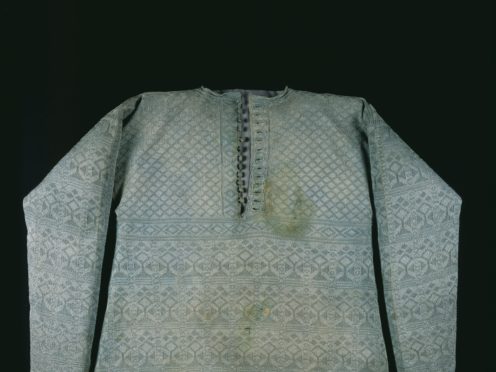A vest said to have been worn by Charles I at his execution is going on display on the anniversary of his death.
The vest has stains on its front, which “could be sweat, vomit or another substance”.
King Charles I was found guilty of treason and beheaded outside Banqueting House in Whitehall, London, on January 30 1649.
Following his decapitation, the monarch’s body was undressed and several items of clothing were given to people who had watched the execution.

When given to the Museum of London in 1925, the vest came with a note of authentication attached, stating it was worn by Charles I on the day he was beheaded.
It said the garment, made from fine, high-quality, pale blue-green silk, was handed to the physician who attended him.
The Museum of London also holds other items said to be from Charles I’s execution, such as gloves, fragments of a cloak and a handkerchief.
They will go on display in an exhibition exploring public execution in London’s history through the stories, objects and legacies of those that lived, died and witnessed events from 1196 to 1868.

Curator Meriel Jeater said: “It’s important to remember that public executions were not reserved only for the distinguished, but that thousands of ordinary Londoners were sentenced to death for many types of crime, from the most serious offences to those that we would consider minor today.
“The exhibition covers nearly 700 years, a time when public executions were more frequent in London than any other town, attracting huge crowds several times a year at locations across the capital.
“Public executions became embedded in the landscape and culture of London, influencing people’s everyday lives.
“Hints of this uncomfortable past can still be seen in the city’s streets today and Executions will allow visitors to explore this grim but fascinating aspect of London’s history through a major exhibition for the first time.”
Executions opens on October 16 at the Museum Of London.
